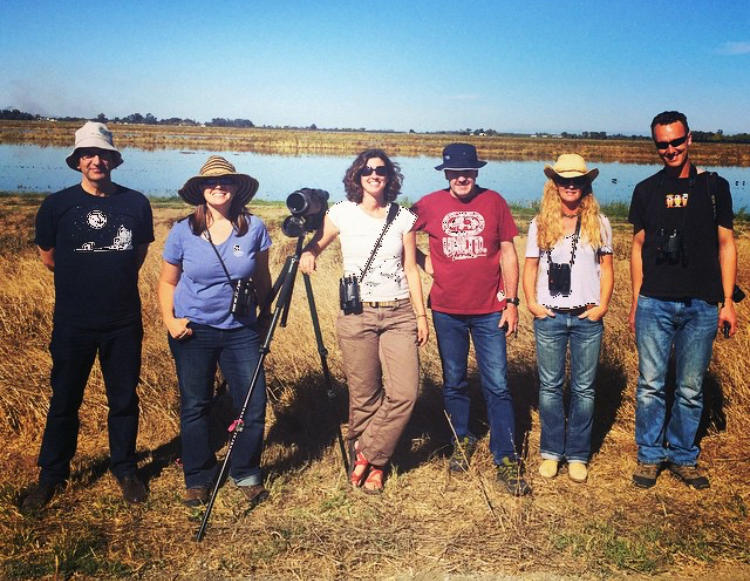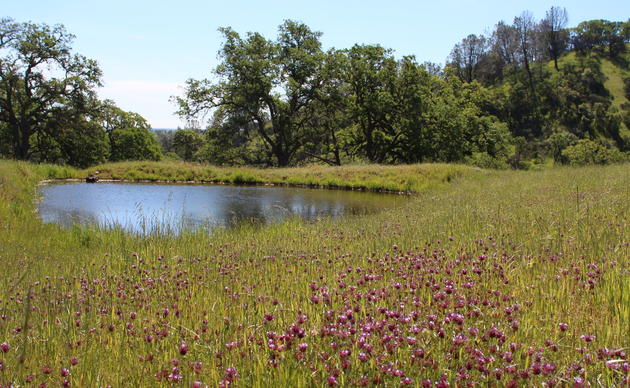
I frequently act as host in my role as conservationist with Audubon California – normally using my hospitality skills to encourage migrating shorebirds to use alternative habitat on rice fields. Last week, my skills were directed at hemispheric travelers of the human variety, Australian biologists. The group was visiting California to learn how Audubon California, along with the other partners in the Migratory Bird Conservation Partnership, create bird habitat on rice.
We started the morning in the beautiful Yolo Bypass Wildlife Area where we toured rice fields that are enrolled in a program that creates shallow fall flooding for shorebirds from July-September. Afterward we drove north to Montna Farms where fields are enrolled in the Bird Returns program sponsored by The Nature Conservancy. The Aussies were pleased to see flocks of Dunlin, Long-billed Dowitcher, Black-necked Stilts, American Avocet, and Greater Yellowlegs that were all enjoying the surrogate habitat. It was rumored there was a Pectoral Sandpiper nearby but we sadly didn’t catch it.
My guests from Australia also work in rice, studying the Australasian Bittern and other wetland-dependent species. The bitterns breed in rice fields of the Murray Darling Basin in southeast Australia and prefer aerially-sown rice fields as opposed to drill-seeded rice fields. Through their work, the team has made recommendations on bittern-friendly rice practices to help ensure the nesting success of this globally endangered species.
It was exciting to exchange ideas with friends from down under who face some of the same challenges and opportunities as we do here in California. The message of multiple benefits is an important one and one that I hope we continue to pursue. While it is not perfect, agriculture can support food for people, habitat for birds, and livelihood for families.
Learn more about the Migratory Bird Conservation Partnership: http://www.camigratorybirds.org/
Learn more about the Australians' work: http://www.bitternsinrice.com.au/
By Khara Strum
Support Bobcat Ranch
Your gift supports our work to develop & promote bird-friendly cattle ranching practices in CA and to protect and restore native grassland habitat for birds.




